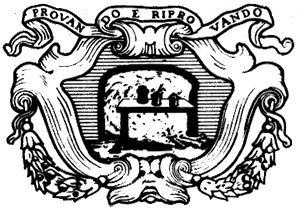The Accademia del Cimento in the European Context (1657-2007)

International conference
December 14-15, 2007
Florence, Biblioteca degli Uffizi
Promoted by: Fondazione Scienza e Tecnica, Istituto e Museo di Storia della Scienza, Johns Hopkins University, Università di Cassino
Home | Program | Information | Credits
Founded in 1657 by Prince Leopoldo de Medici and Grand Duke Ferdinando de Medici, the Accademia del Cimento was one of the first scientific societies in Europe. Its primary mission was the development and propagation of Galilean experimental methodology throughout the natural sciences. The work of the Accademia--carried out under its motto "By testing and retesting" (Provando e riprovando)--called for rigorously experimental proof of the principles of natural philosophy. During their meetings, customarily held at the Pitti Palace, many experiments were carried out particularly in thermometry, chemistry, medicine, barometrics and pneumatics, using specially constructed instruments. The Accademia's activity came to a close in 1667 with the publication of the Saggi di naturali esperienze, a volume presenting the principal results that had been obtained.
The conference will examine the Accademia's experimental activity and scientific instruments, not only in regard to their studies of the physical sciences (upon which historians have hitherto concentrated much of their attention) but also in terms of chemistry and the life sciences.
The Accademia del Cimento was not an isolated development in the scientific life of Italy. Although the Accademia dei Lincei closed immediately upon the death of Cesi, yet the legacy of its research continued to play a role even after the trial and condemnation of Galileo. Thus the conference will also examine the relations between the Cimento and other Italian scientific societies: the Lincei, the Accademia degli Investiganti at Naples, and the academies that flourished in Rome during the second half the seventeenth century. Such relations were not merely idealized, but took concrete form in the work of members who, like Borelli, played a fundamental role in their very diverse geographical and cultural contexts.
The conference will also be an occasion to study the Accademia's exchanges with scientists and other scientific societies across Europe (particularly in France and England). The publication of the Saggi and its reception in various scientific milieux can furnish further material for establishing the role of the Accademia del Cimento in seventeenth-century European science.
.................................
|